Wanam rainbowfish - Glossolepis wanamensis
Scientific name: Glossolepis wanamensis
Common name: Wanam rainbowfish
Family: Melanotaeniidae
Usual size in fish tanks: 9 - 10 cm (3.54 - 3.94 inch)
014
Recommended pH range: 6.5 - 7.8
Recommended water hardness: 12 - 16°N (214.29 - 285.71ppm)
0°C 32°F30°C 86°F
Recommended temperature range: 24 - 27 °C (75.2 - 80.6°F)
The way how these fish reproduce: Spawning
Where the species comes from: Oceania
Temperament to its own species: peaceful
Temperament toward other fish species: peaceful
Usual place in the tank: Middle levels
Food and Feeding
In the wild, Wanam Rainbowfish (Glossolepis wanamensis) primarily feed on insects, zooplankton, small crustaceans, and algae. In aquariums, they readily accept a varied diet, including:
- High-quality flakes and pellets – For daily nutrition.
- Live and frozen foods – Brine shrimp, daphnia, mosquito larvae, and bloodworms.
- Vegetable matter – Spirulina flakes, blanched spinach, and algae-based foods.
Feed small portions multiple times a day to replicate their natural feeding habits and maintain their vibrant coloration.
Origin
Endemic to Papua New Guinea, Wanam Rainbowfish are found exclusively in Lake Wanam. Unfortunately, due to habitat destruction and the introduction of predatory fish (Tilapia), this species is critically endangered or possibly extinct in the wild. Today, they survive only in aquarium populations.
Sexing
Sexing Wanam Rainbowfish is relatively straightforward:
- Males – Larger, more vibrant, with an extended anal fin and reddish coloration on the breast and fin edges.
- Females – Smaller, with a more muted coloration and a shorter, rounded anal fin.
Breeding
Wanam Rainbowfish are egg scatterers and relatively easy to breed. To encourage spawning:
- Provide spawning mops or dense plants (Java moss, Cabomba) for egg deposition.
- Maintain slightly warmer temperatures (26-27°C / 78-80°F) to stimulate breeding.
- Once eggs are laid, remove the mop or transfer the eggs to a separate rearing tank to prevent predation.
Eggs hatch in 7-10 days, and the fry require Infusoria or Paramecium as an initial food source before transitioning to newly hatched brine shrimp or vinegar eels.
Lifespan
With proper care, the expected lifespan of Glossolepis wanamensis is 5-7 years.
Tank Setup and Behavior
Wanam Rainbowfish thrive in a well-planted tank with excellent water quality. They are active, peaceful fish that require:
- A minimum tank size of 100 liters (26 gallons) for a small group.
- Stable water conditions – Regular water changes are crucial.
- Aquascaping with plants – Use species like:
- Java Fern – Hardy and easy to maintain.
- Anubias – Provides shade and shelter.
- Cryptocoryne Wendtii – Thrives in soft, slightly acidic water.
- Java Moss – Excellent for spawning.
Tank Mates
Wanam Rainbowfish are peaceful and best kept in schools of at least 6-8 individuals. Suitable tank mates include:
- Neon Tetras – Small, vibrant, and peaceful.
- Harlequin Rasboras – Non-aggressive and active.
- Otocinclus Catfish – Gentle algae grazers.
- Sterbai Corydoras – Bottom-dwelling scavengers.
Tank mates to avoid:
- Oscars – Too large and aggressive.
- Convict Cichlids – Territorial and aggressive.
- Tiger Barbs – Fin-nippers that may stress rainbowfish.
Short Description
Wanam Rainbowfish (Glossolepis wanamensis) is a rare and beautiful species that requires pristine water conditions and a planted environment to thrive. Due to their critically endangered status in the wild, maintaining healthy aquarium populations is essential for their survival. Their stunning colors, peaceful nature, and schooling behavior make them an excellent choice for dedicated aquarists.
Picture
Bought by aqua-fish.net from jjphoto.dk.
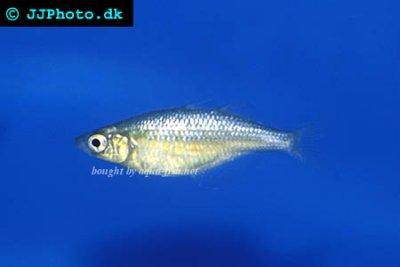

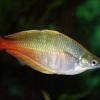 Bleher’s
Bleher’s 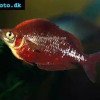 Red
Red 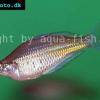 Ramu
Ramu 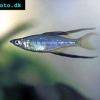 Threadfin
Threadfin 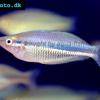 New
New 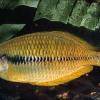 Yakati
Yakati 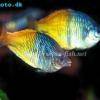 Boesemani
Boesemani 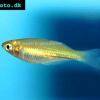 Crimson
Crimson 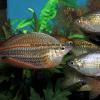 Australian
Australian 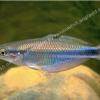 Goldie
Goldie 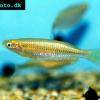 Slender
Slender 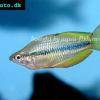 Lake
Lake 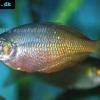 Irian
Irian 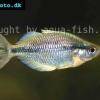 Kamaka
Kamaka 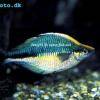 Lake
Lake 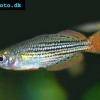 Dwarf
Dwarf 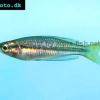 Black
Black 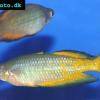 Parkinsoni
Parkinsoni 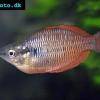 Sunset
Sunset 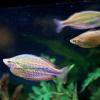 Neon
Neon 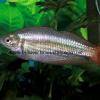 Western
Western 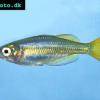 Inornate
Inornate 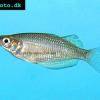 Ruby
Ruby 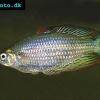 Eastern
Eastern 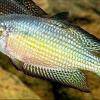 Desert
Desert 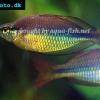 Regal
Regal